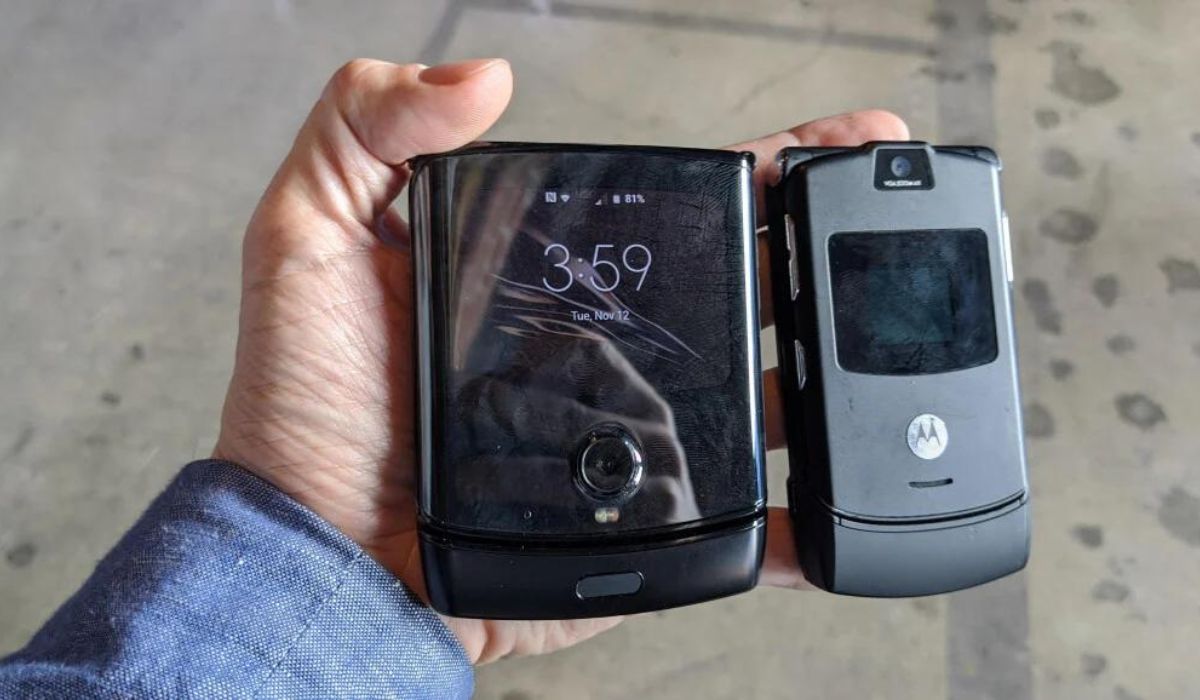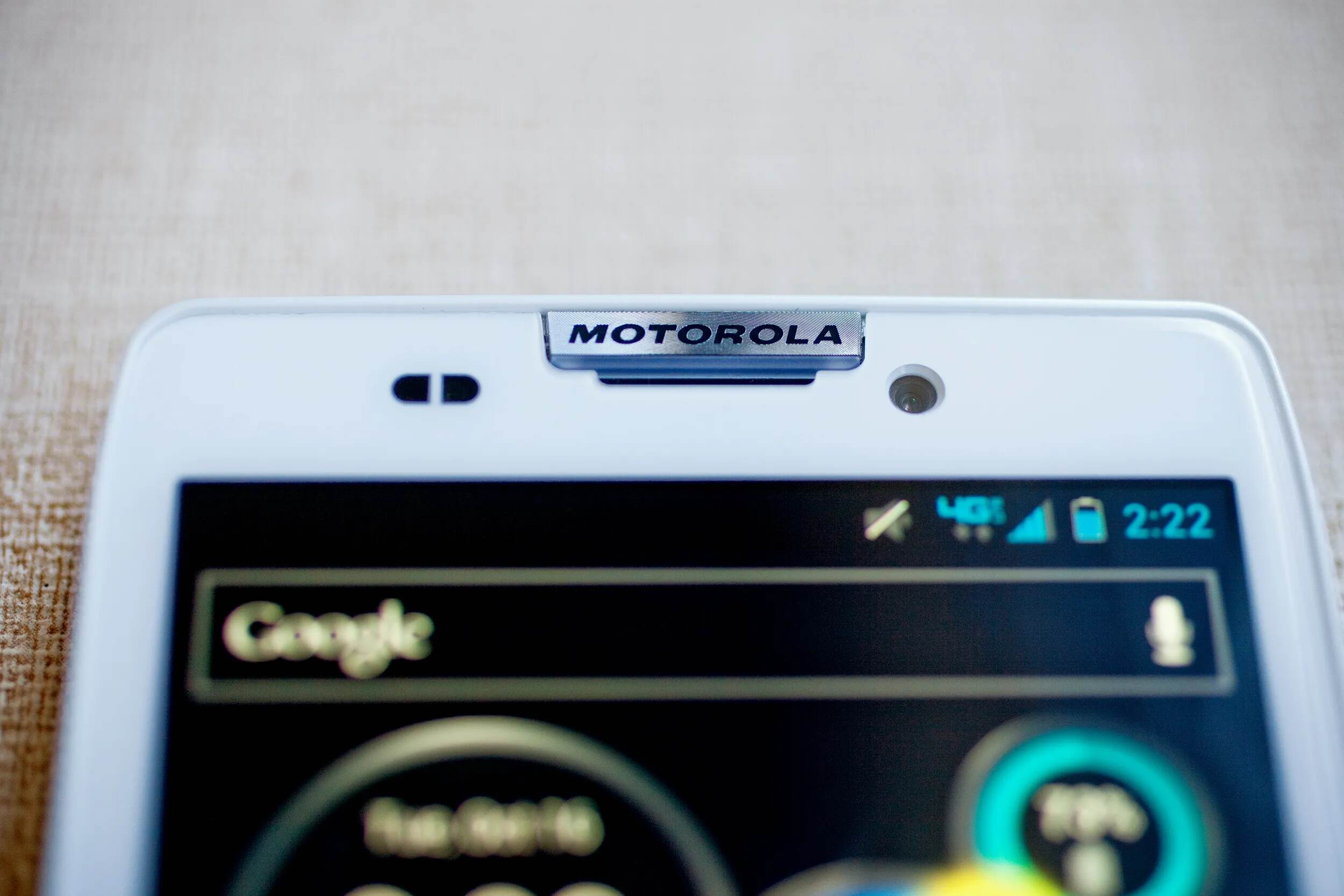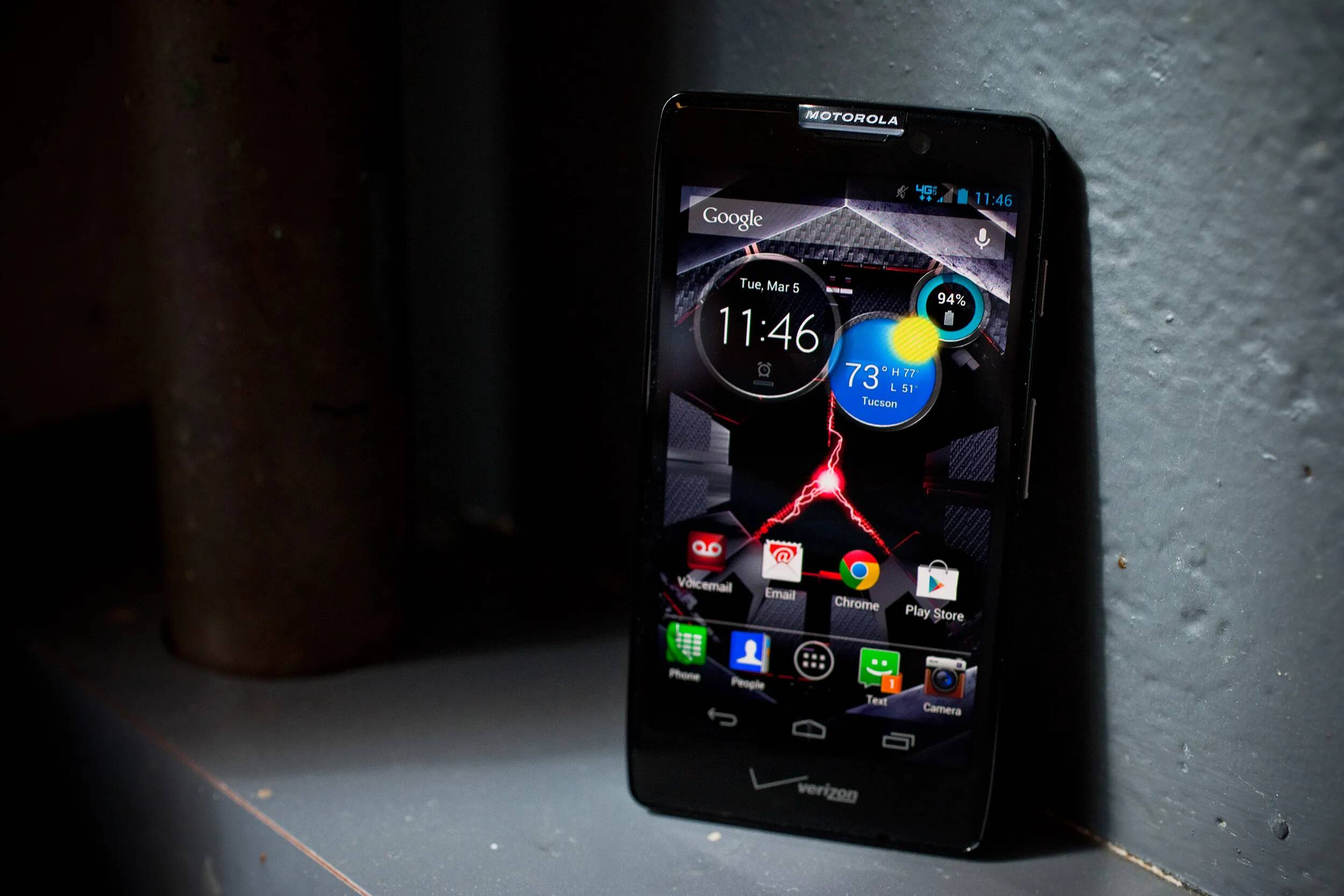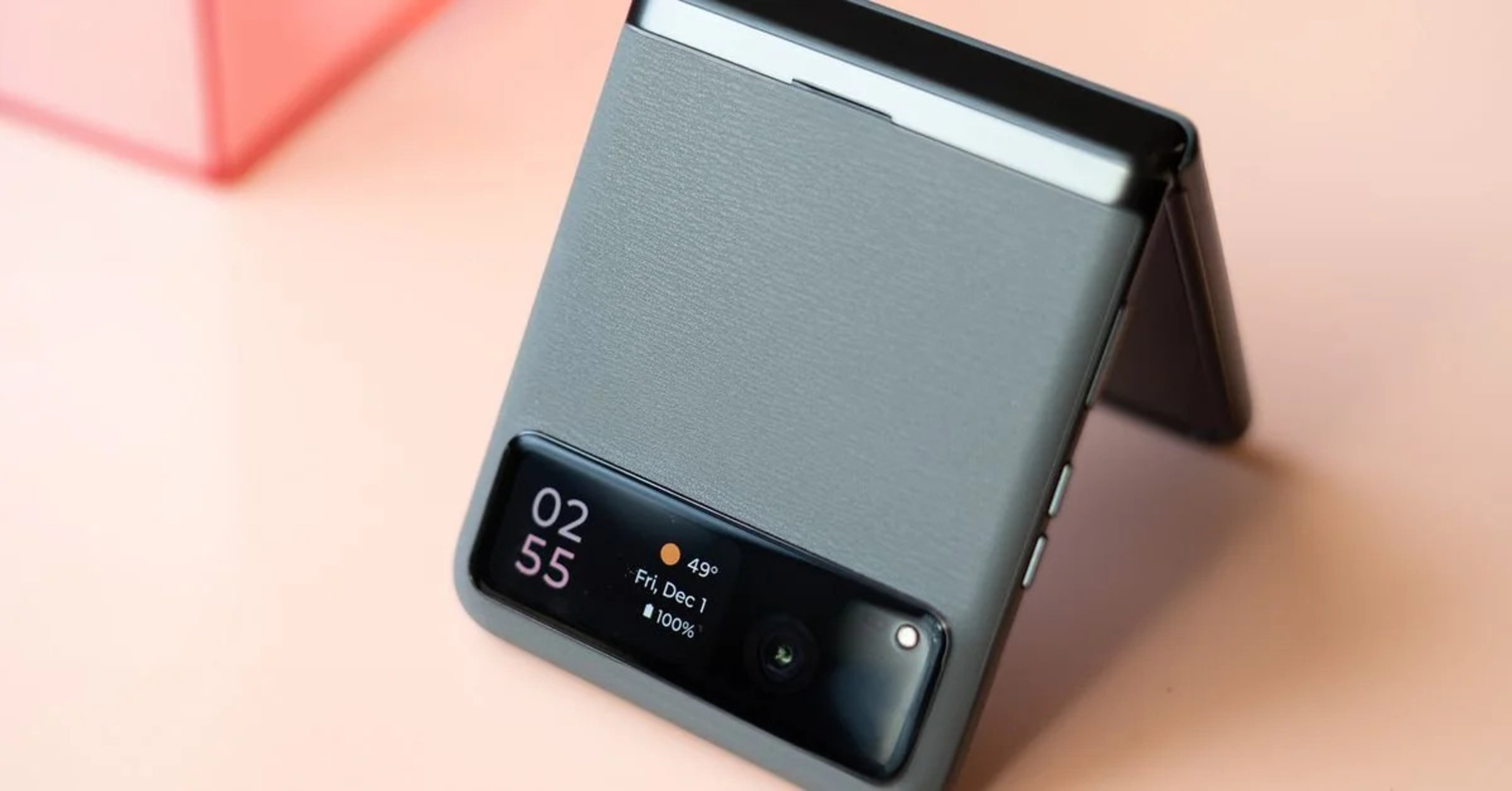Check for Software Updates
Keeping your Motorola Razr Maxx up to date with the latest software is crucial for optimal performance and security. Software updates often include bug fixes, performance enhancements, and new features that can significantly improve the overall user experience. Here's how you can check for and install software updates on your device:
-
Connect to a Stable Wi-Fi Network: Before checking for software updates, ensure that your device is connected to a stable Wi-Fi network. This is important as software updates can be large in size and may consume a significant amount of data if downloaded over a mobile network.
-
Navigate to Settings: Open the Settings app on your Motorola Razr Maxx. You can typically find the Settings app in the app drawer or by swiping down from the top of the screen and tapping the gear icon in the top-right corner.
-
Select System Updates: Scroll down and tap on "System" or "About phone" to access the system settings. Look for the "System updates" or "Software updates" option and tap on it.
-
Check for Updates: Your device will now check for available software updates. If an update is available, you will be prompted to download and install it. Follow the on-screen instructions to initiate the update process.
-
Install the Update: Once the update is downloaded, your device will prompt you to install it. Ensure that your device is sufficiently charged or connected to a power source before proceeding with the installation. Tap "Install" and allow the update to complete.
-
Restart Your Device: After the update is installed, it's a good practice to restart your device to ensure that the changes take effect.
By regularly checking for software updates and keeping your Motorola Razr Maxx's operating system up to date, you can ensure that your device is equipped with the latest improvements and security patches. This can lead to enhanced performance, improved battery life, and a more seamless user experience.
Remember, staying proactive with software updates not only optimizes your device's performance but also safeguards it against potential security vulnerabilities. Make it a habit to check for updates periodically to stay ahead of the curve and make the most of your Motorola Razr Maxx.
Clear Cache and Data
Over time, the cache and accumulated data on your Motorola Razr Maxx can impact its performance and responsiveness. Clearing the cache and data can help resolve issues related to sluggishness, app crashes, and overall system slowdown. Here's how you can effectively clear the cache and data on your device:
Clear App Cache
- Access App Settings: Open the "Settings" app on your device and navigate to "Apps" or "Applications" in the settings menu.
- Select App: Scroll through the list of installed apps and select the app for which you want to clear the cache.
- Clear Cache: Within the app's settings, tap on "Storage" and then select "Clear Cache." This action will remove temporary files and data associated with the app, potentially resolving performance issues.
Clear System Cache
- Access Recovery Mode: Turn off your Motorola Razr Maxx and then press and hold the volume down and power buttons simultaneously until the device boots into recovery mode.
- Navigate Recovery Menu: In recovery mode, use the volume buttons to navigate and the power button to select "Recovery" from the menu.
- Clear Cache Partition: Once in recovery mode, select "Wipe cache partition" to clear the system cache. This process can help eliminate temporary system files that may be causing performance issues.
Clear App Data
- Access App Settings: Similarly, navigate to the "Apps" or "Applications" section within the device settings.
- Select App: Choose the specific app for which you want to clear data.
- Clear App Data: Within the app's settings, tap on "Storage" and then select "Clear Data" or "Clear Storage." Be mindful that clearing app data will reset the app to its initial state, erasing all user data and settings associated with the app.
By clearing the cache and data on your Motorola Razr Maxx, you can free up valuable storage space and potentially resolve performance issues. It's important to note that clearing app data will reset certain apps, requiring you to reconfigure settings and log back into accounts. However, this process can often address persistent app-related issues and improve overall device performance.
Regularly clearing the cache and data of apps that exhibit sluggish behavior or encounter frequent crashes can contribute to a smoother and more responsive user experience on your Motorola Razr Maxx. This maintenance task is particularly beneficial for optimizing the device's performance and ensuring that it operates at its best.
Disable Unused Apps and Services
Managing the apps and services running on your Motorola Razr Maxx is essential for optimizing its performance and maximizing battery life. Disabling unused apps and services not only declutters your device but also conserves valuable system resources. Here's a detailed guide on how to identify and disable unnecessary apps and services to streamline your device's functionality.
Identify Unused Apps
- Assess App Usage: Begin by evaluating the apps installed on your device. Navigate to the "Settings" app and access the "Apps" or "Applications" section. Here, you'll find a comprehensive list of all installed apps along with their respective usage statistics.
- Review App Functionality: Consider the purpose and frequency of use for each app. Identify apps that you rarely or never use, as well as those that run in the background without providing substantial value to your daily activities.
Disable Unused Apps
- Access App Settings: Once you've identified the apps to disable, select each app from the list and navigate to its settings.
- Disable App: Within the app's settings, locate the "Disable" or "Turn off" option. By disabling an app, you effectively prevent it from running in the background and consuming system resources.
Manage Background Services
- Review Background Services: In addition to individual apps, it's crucial to assess background services that may be running on your device. These services often operate silently, impacting performance and battery life.
- Access System Settings: Navigate to the system settings and locate the "Developer options" or "Background services" section. Here, you can view and manage background processes that may be unnecessary or redundant.
Benefits of Disabling Unused Apps and Services
- Improved Performance: By disabling unused apps and background services, you free up system resources, leading to enhanced device responsiveness and smoother multitasking.
- Extended Battery Life: Unnecessary apps and services contribute to battery drain. Disabling them conserves battery power, prolonging the time between charges.
- Reduced Clutter: Streamlining your device by disabling unused apps and services declutters the interface, making it easier to navigate and locate essential apps.
Ongoing Maintenance
Regularly reviewing and disabling unused apps and services is an ongoing maintenance task that ensures your Motorola Razr Maxx operates at its optimal capacity. By periodically decluttering your device, you can maintain a streamlined and efficient user experience while maximizing performance and battery efficiency.
By proactively managing apps and services, you can tailor your device to suit your specific needs, resulting in a more personalized and efficient user experience on your Motorola Razr Maxx.
Remove Unnecessary Widgets and Live Wallpapers
Widgets and live wallpapers can add visual appeal and functionality to your Motorola Razr Maxx, but having an excessive number of them can impact the device's performance and battery life. By removing unnecessary widgets and live wallpapers, you can streamline your device's interface and optimize its resources for improved efficiency.
Widgets Management
Widgets are convenient tools that provide quick access to information and app functionalities directly from the home screen. However, having an abundance of widgets can lead to increased system resource consumption and potential performance degradation. Here's how you can manage and remove unnecessary widgets:
-
Assess Widget Usage: Begin by evaluating the widgets currently displayed on your home screen. Identify widgets that you rarely interact with or those that consume significant resources without providing substantial utility.
-
Remove Unnecessary Widgets: Press and hold on the widget you wish to remove until options appear. Drag the widget to the "Remove" or "Trash" icon, depending on your device's interface, to delete it from the home screen.
-
Review Widget Settings: For widgets that offer customization options, consider adjusting their settings to minimize resource usage while retaining essential functionality.
Live Wallpapers Optimization
Live wallpapers can enhance the visual appeal of your device by adding dynamic and interactive backgrounds. However, they can also consume additional system resources and battery power. Here's how you can optimize live wallpapers on your Motorola Razr Maxx:
-
Evaluate Live Wallpaper Impact: Assess the impact of live wallpapers on your device's performance and battery life. If you notice significant resource consumption or performance issues, consider switching to a static wallpaper.
-
Select Lightweight Alternatives: If you prefer using live wallpapers, opt for lightweight and less resource-intensive options. Simple and static live wallpapers can provide visual appeal without imposing a heavy burden on system resources.
-
Disable Live Wallpapers: If you find that live wallpapers are contributing to performance issues, consider disabling them altogether. Navigate to the device's wallpaper settings and select a static wallpaper to reduce resource consumption.
By removing unnecessary widgets and optimizing live wallpapers, you can declutter your device's interface and ensure that system resources are allocated efficiently. This proactive approach can lead to improved performance, enhanced battery life, and a more responsive user experience on your Motorola Razr Maxx. Regularly reviewing and optimizing widgets and wallpapers is a valuable maintenance practice that contributes to the overall efficiency and usability of your device.
Restart Your Device
Restarting your Motorola Razr Maxx is a simple yet effective troubleshooting step that can address a wide range of performance issues and software glitches. This process involves shutting down the device and then powering it back on, allowing the operating system to reset and reinitialize various system components. Restarting your device can often resolve minor software hiccups, improve system stability, and refresh system resources, ultimately leading to a smoother and more responsive user experience.
When your device is powered on for extended periods, various background processes, apps, and system components continue to run, potentially leading to the accumulation of temporary data and minor software errors. These factors can contribute to sluggishness, unresponsiveness, and unexpected app behavior. By restarting your device, you effectively clear these temporary data and reset the system, providing a clean slate for the operating system to operate optimally.
To restart your Motorola Razr Maxx, simply press and hold the power button until the power options menu appears on the screen. Then, select the "Restart" or "Reboot" option to initiate the process. Alternatively, you can power off the device completely and then press and hold the power button again to turn it back on.
It's important to note that restarting your device does not result in the loss of any personal data or settings. Instead, it serves as a soft reset that can help alleviate performance issues and restore the device to a more stable state. This simple yet impactful troubleshooting step is often recommended by technical support professionals and can be particularly beneficial when encountering minor software glitches or unexplained system behavior.
In addition to addressing specific issues, restarting your device on a regular basis can contribute to overall system health and longevity. It allows the device to clear temporary data, refresh system resources, and ensure that the operating system operates optimally. By incorporating regular restarts into your device maintenance routine, you can proactively mitigate potential performance issues and maintain a consistently smooth and responsive user experience on your Motorola Razr Maxx.
Factory Reset Your Device
Performing a factory reset on your Motorola Razr Maxx is a comprehensive troubleshooting step that can effectively address persistent software issues, restore the device to its original state, and eliminate problematic configurations. It is important to note that a factory reset erases all data, settings, and installed apps from the device, essentially returning it to the state it was in when it left the factory. As such, it is crucial to back up any important data, such as photos, videos, contacts, and documents, before proceeding with a factory reset.
To initiate a factory reset on your Motorola Razr Maxx, follow these steps:
-
Backup Your Data: Before proceeding with a factory reset, ensure that all important data is backed up to a secure location. This can be done by transferring files to an external storage device, utilizing cloud storage services, or using the built-in backup features of the device.
-
Access Settings: Open the Settings app on your device and navigate to the "System" or "About phone" section.
-
Select Reset Options: Look for the "Reset" or "Backup & reset" option within the system settings. Here, you will find the "Factory data reset" or "Erase all data (factory reset)" option.
-
Initiate the Reset: Tap on the "Factory data reset" option and follow the on-screen prompts to confirm the action. You may be required to enter your device's PIN or pattern to proceed with the reset.
-
Wait for the Process to Complete: Once the factory reset process is initiated, your device will begin erasing all data and restoring the original system settings. This process may take some time to complete, and your device will restart once the reset is finished.
It is important to emphasize that a factory reset should be approached with caution, as it permanently erases all user data and settings. This step is typically reserved for addressing persistent software issues that cannot be resolved through other troubleshooting methods. Common scenarios that may warrant a factory reset include severe system instability, recurring app crashes, and unresponsive behavior that persists despite other troubleshooting efforts.
After performing a factory reset, your Motorola Razr Maxx will essentially be in a "fresh" state, free from any software issues or problematic configurations that may have been causing performance issues. However, it is essential to reinstall apps, reconfigure settings, and restore backed-up data to personalize the device once again.
By understanding the implications and benefits of a factory reset, you can effectively leverage this troubleshooting step to address significant software issues and restore your Motorola Razr Maxx to a stable and reliable state.

























